There’s nothing worse than buying a paintbrush that doesn’t meet your needs. You can end up with too hard or soft bristles, a tip that doesn’t have enough bristles, and even a handle that feels awkward in your hand.

To get the best possible results from your painting project, it’s essential to use the right tools for the job. Let’s look at how cheap, and expensive paint brushes compare and the correct uses for each one.
Cheap paint brushes are tempting because they won’t cost you a fortune and do an OK job at first glance. However, will they give you the quality you’re looking for? Let’s see!
Cheap vs Expensive Paint Brushes – A Quick Comparison
Cheap Paint Brushes
It’s a common misconception that cheap brushes are a good deal. But that couldn’t be further from the truth! If you want your painting job to look professional, choose better-quality brushes.
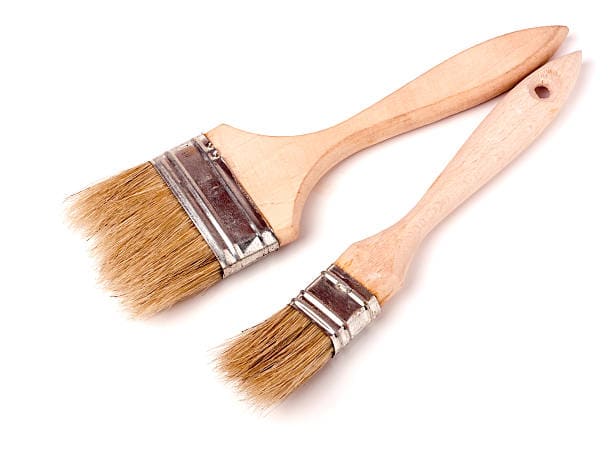
With cheap brushes, you’ll think you’ll be saving money by buying them, but it’s quite the opposite. They’ll cost you more time to use, and the frustration is not worth it. You can use them to apply glue or any paint that doesn’t need a fine finish. But when it comes to professional painting, they will do you no good.
No matter how good of a painter you are, cheap brushes will make your work look mediocre. They mostly have synthetic bristles, known for their poor ability to hold enough paint on their tips. As a result, your paint job will be streaky and blotchy. Furthermore, the metal strap around the bristles, called the ferrule, won’t be tight enough in cheap brushes. The hair will start falling apart and end up ruining your work. Even if you get foam brushes, they won’t be satisfying. You may use them for minor touch-ups but don’t for best work.
Expensive Paint Brushes
If you’re looking for the best sound quality brushes out there, you want to make sure they’re not only going to last you a long time but also that they’ll give you better results than cheaper options.
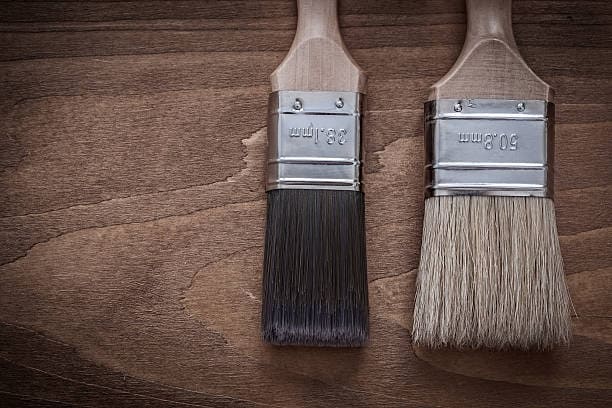
There are a few ways to tell if a brush is going to be worth the money:
-Expensive brushes mean you’ll get high-quality, soft bristles and tight, neat ferrules. The bristles will be either wholly natural or a blend natural and synthetic hairs. Each type has a different use. For instance, natural bristles work perfectly well with oil-based paint, but we can’t say the same about water-based colours. Synthetic bristles work well with both.
-Expensive brushes are tapered near the end to allow the tip to hold enough paint. Plus, the tips will look like split-end hairs. You can quickly tell them apart from cheap brushes.
-The ferrules of expensive brushes will be non-corrosive to stay durable for the longest time possible. They’ll also be tight to hold the bristles securely without letting them shed.
Why You Should Avoid Cheap Paint Brushes
If you’re a painter, you know that a good brush can make all the difference between a job well done and a mediocre job. But if you’re new to this tool, it can be hard to know what kinds of brushes are worth the money (and what are not).
Here are some reasons why investing in expensive paintbrushes is worthwhile,
-They will last longer than cheap ones. Cheap brushes tend to shed hair quickly and break down after just a few uses, so buying them is like throwing money down the drain (literally). Expensive brushes last longer because they’re made from better materials. They also tend to hold their shape better and aren’t as prone to warping over time.
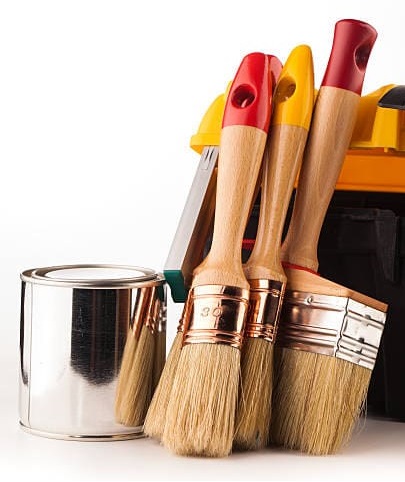
-They do an excellent job of applying paint evenly across surfaces so that your walls look smooth and professional when you’re done working on them. This is especially important if you paint an entire room or just one wall! When cheap brushes apply paint unevenly, it can create streaks that ruin your work and make it look amateurish or sloppy—not precisely what most people want out of their home decorating projects!
The Bristles Are Too Loose
Have you ever tried to paint, but the bristles keep getting stuck in the wet paint?
It’s incredibly frustrating—and for a good reason! It can ruin your day, and it’s a waste of energy and time.
But what if there was a way to get a smooth finish on the first try? What if something could help you get rid of those pesky loose bristles?
The Tips Are Stiff
If you’re a painter, you know that the best paintbrushes are made with natural bristles. They have a soft and smooth texture, which makes them perfect for creating fine lines and strokes.
But what if you don’t want to spend money on expensive brushes? What if you’re starting or need new brushes for your current projects? It can be tempting to grab a cheap pack of synthetic bristles instead—they’re way cheaper! But here’s the thing: synthetic bristles make visible strokes on the canvas. You’ll need to apply more paint coats to fix the streaking and get a smooth finish, which is a loss of time and effort.
On top of that, the bristles may be limp, which will cause the paint to drip and splatter everywhere. In both cases, your finished work won’t look as good as you hoped.
They’ll Need Frequent Replacements

All cheap products have short lifespans, starting from paintbrushes to cars. So, it’s only natural your brush will need frequent replacements, which isn’t ideal. Whether it’s a wobbly handle, a blunt tip, or loose bristles, the brush will break apart sooner than you expect. You’ll need to buy another paintbrush, which means you’ll pay double and get the same quality. On the other hand, quality paint brushes are highly durable; you won’t have to replace them as frequently.
Don’t get tricked by budget-friendly brushes. They’ll seem like a good investment initially, but they’ll need replacement soon. Besides, they’ll waste your time while painting because of their low quality.
How To Care for Your Expensive Paint Brushes
It would help if you took good care of your paintbrushes because it will make them last longer.
The best way to do that is to clean them quickly after each use and then store them properly.
You can get more value from the dollar you spend on a brush if you take care of it properly, and that means paying attention to the following steps:
Consider The Paint Type
A good brush can make all the difference in your painting experience. That’s why it’s essential to know how to choose the right brush for the right paint type and take care of your brushes properly.
Paint brushes come in all shapes, sizes, and materials. The first thing you’ll want to consider is whether or not you’re using acrylic paint or watercolour paints—each requires its particular type of brush. Acrylics are oil-based paints that dry quickly, so you can use them on almost any surface (including canvas). Watercolours are water-soluble paints that require a lot more control than acrylics do. They’re also less durable than acrylics, so they’re best suited for paper or fabric projects rather than canvas ones.
When choosing a paintbrush for your project, think about what kind of surface you’ll be working on and what kind of paint you plan on using with it—both factors will affect how much control you have over your brushstrokes and the outcome!
Keep Your Brush Wet
Painting with a dry brush is like… well, you know what it’s like. It’s frustrating, messy, and not the best way to get the job done.

But if you’re painting at home and don’t have access to a sink (or if you’re just so excited about the new project that you want to get started right away), how do you keep your brush wet without letting it dry out?
Here are some tips:
- As long as you’re still painting, keep your brush wet without letting it dry out. If you’re taking a break, you can wash your brush to ensure it retains moisture.
- Alternatively, drop it in a cup of water or keep it in a plastic bag. Letting it dry and wetting it again and again while painting will cause the bristles to wear out much faster than they should
Clean The Brushes Thoroughly
You know that old saying, “Cleanliness is next to godliness”? Well, it’s true. And when it comes to your paintbrush, keeping it clean is even more important than having faith in a higher power.
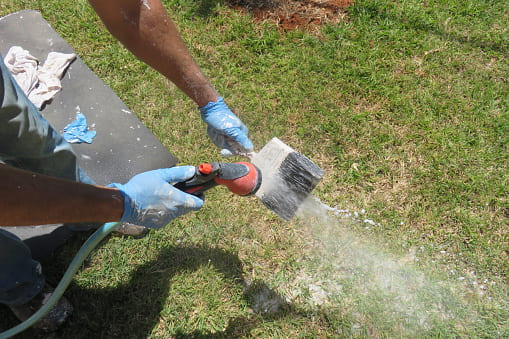
If you find your paintbrush dry and stiff when you’re ready to paint, that’s a sign that you hadn’t cleaned it well when you finished painting. Your brush needs to be 100% empty of paint before you store it or let it sit for a long.
You can ensure that by bending the bristles and spreading them under water to get the paint out. Much of the paint will be hiding in the ferrule, so flip the brush and get the water inside. You can also use warm water if there’s dry paint.
Afterwards, move the bristles around and check the brush thoroughly to ensure it’s clean—and then get back out!
Store The Brushes
Paint brushes mostly come in covers that contour to their shapes. We all throw the covers away, thinking their only purpose is to make the brush look appealing for the purchase.
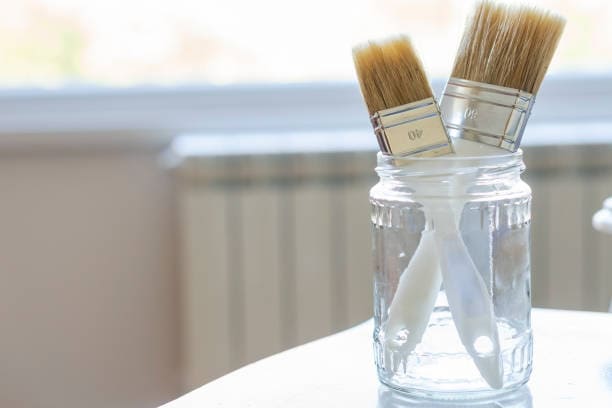
However, these covers help the bristles stay in their original form, so they don’t bend or come loose. If you’re storing your brush for a long time, it’s better to keep it in its dedicated case, so it doesn’t lose its original shape.
The following are some tips on how to keep your brush safe:
– When you buy a new paintbrush, wash it with soap and warm water after use. This will clean out any dust or dirt from the bristles that might have gathered during use.
– Store your paintbrush upright so that water doesn’t seep through the bristles when you aren’t using it! I recommend storing them in a box where they can stand upright without falling over (this way, you don’t have to worry about water getting into them).
How Do I Get the Most Out of My Paint Brushes?
- If you’ve been painting for a while, you know how important it is to keep your brushes in good shape. You also know that this can be hard when you’re painting on the go—especially if you’re working with a limited budget and space. But don’t worry! You can do some simple things to ensure your brush stays clean and ready to use at all times.
- First, use a brush cleaner! If there’s any dirt or residue on the bristles of your paintbrush, then it won’t be able to pick up as much paint as it usually could. This could lead to wasted time and money if you use multiple brushes simultaneously! So make sure that all of them have been cleaned before each painting session begins!
- Next, use a brush preserver (or storage container). The best way for someone who wants their brushes cared for properly is by putting them into something called “a preserver”, which will help keep everything nice and clean inside without having any air contact with anything else outside either side walls inside containers which contain various sizes depending upon how many people live together within one household; however this may increase costs due mainly because these types need replacing more often than others as regular ones do.
Things to Keep in Mind When Buying Paint Brushes?
When looking for a flat or round brush, there are a few things to remember. First and foremost, the bristles should be soft and sturdy. The handle should also be comfortable and non-slip, mainly if you use your brush for long periods or on large surfaces like walls or ceilings. You’ll want to pay attention when choosing between different materials—for example, synthetic brushes are usually more expensive than natural ones but last longer because they won’t absorb stains as quickly (and therefore don’t need regular cleaning).
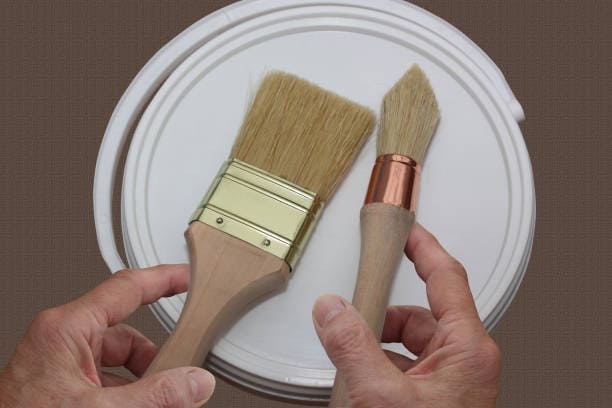
Another thing to consider is whether or not the quality brush bristles are made of natural materials like cotton or nylon. Synthetic bristles are often made from nylon, which is more substantial than natural fibres and can withstand temperatures up to 360°F (182°C). Natural bristle brushes will break down over time when exposed to these high temperatures, so they’re not as effective at applying thick layers of paint—however, they are usually less expensive than their synthetic counterparts because they’re easy to find in local hardware stores.
The Verdict: Are Expensive Paint Brushes Worth it?
This is a question I get asked a lot, and it’s one that I have struggled with for a long time. On the one hand, want the best quality tools to do the best job possible. On the other hand, don’t want to spend more money than necessary. So, what’s the answer?
The truth is, it depends on a lot of factors. The quality of the paintbrush matters, but so do the type of paint used, the surface painting, and personal preferences.
If you’re starting, I recommend using a cheaper paintbrush. You can always upgrade later if you need a better-quality brush. But if you’re set on getting an expensive paintbrush, do your research and find one that will work well with the type of paint you’ll be doing.
Expensive brushes are worth it because they are high-quality paint brushes. They’re a good investment in the long run because they’re easy to use, don’t fall apart on you after just one use (or even two), and don’t make your hands sore or give you blisters.
Also, you won’t have to buy new paintbrushes soon. You’ll have a pleasant painting experience—something that can be hard to come by when using cheap brushes that break easily and feel like sandpaper against your skin!
